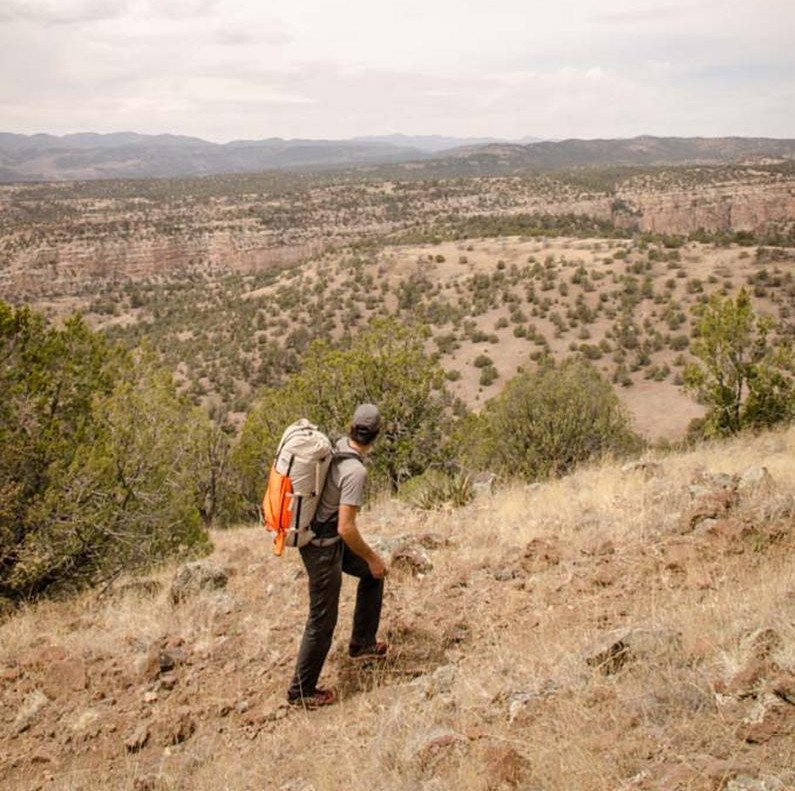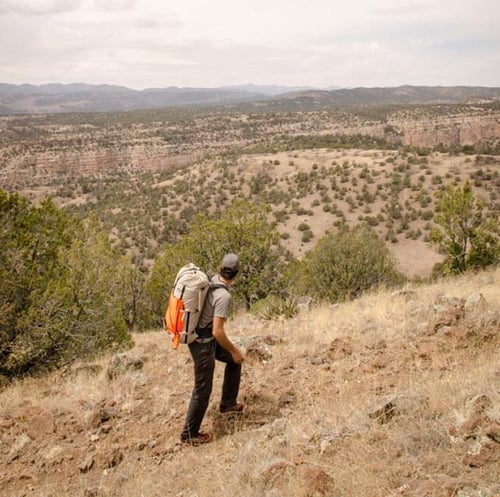If you like to adventure outdoors, you’ll know during backpacking trips that your feet are your primary mode of transportation. Spending extra effort to keep your feet happy and dry is well worth your time and attention. After all, your feet are essentially your “wheels” in the backcountry!
It can be tough to communicate with your peers about the status of their feet. You don’t want to talk down to your friends, but you also want to make sure they're happy and having fun.
One helpful trick is to plan ahead and talk about problems that might arise ahead of time—before your feet are a mess.
Here are a few ideas for you to have happy, healthy feet:
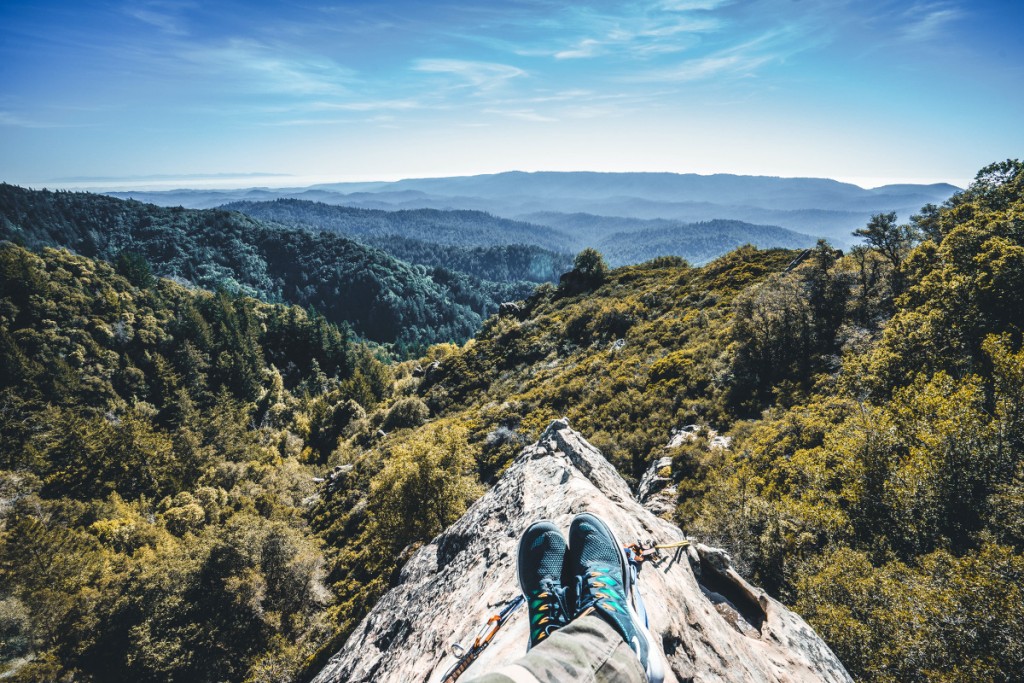 Photo by Joseph Barrientos.
Photo by Joseph Barrientos.Before you hit the trail, discuss the plan!
Talk about where you are going on your trip. Are you going on a day hike or an overnight backpacking trip? Think about how many miles you plan to cover each day, what types of terrain you’ll encounter (which may include trail, rivers, boulder fields, snowpack etc.) as well as goals for the trip.
Knowing the plan and giving your friends all the trip information means that everyone will know exactly what they’re feet have signed on for before the adventure begins.
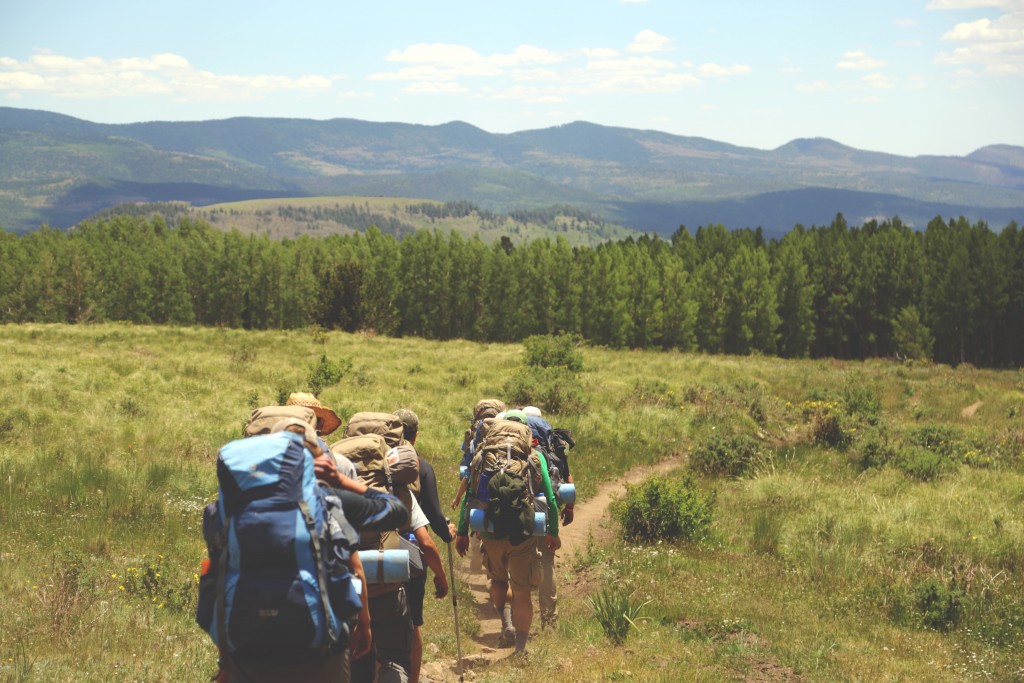 Photo by Austin Ban.
Photo by Austin Ban.What kind of shoes will you need?
Picking shoes for playing outside is not as straightforward as you’d think. Take your time when choosing shoes. If your local outfitter has a ramp you can walk up and down to simulate walking up and down a slope, try that out. This is one way to find out if your toes will hit against the front of your boots when walking so you can avoid “toe jam” when you take the shoes outside.
We’ve broken down a few of the most popular shoe choices for you:
- Backpacking boots: These boots are typically high-cut with a stiff sole and wrap around your ankle for support when carrying heavy loads.
- Mid-weight boots: Lower cut than backpacking boots and lighter weight. These are suitable for shorter trips, or for those who have experience carrying a backpack.
- Trail runners: These shoes are made to grip on uneven terrain, and usually have a substantial tread pattern. These are great for day hikes as well as running. Plenty of people use them for lightweight backpacking trips, too.
- Approach shoes: This shoe is like a trail runner, but the soles have the same grippy rubber as climbing shoes. These shoes are usually used when you’ll encounter lots of rock scrambling or when approaching climbs in the mountains.
- Camp shoe: In addition to the shoes you wear to travel each day, pack another pair of shoes in your backpack for when you get to camp. Your feet will be happy to have a dry pair of shoes to wear for the evening! These can be an old running shoe, or as simple as a pair of Crocs.
It also helps to get fitted for your shoes at a store, rather than purchasing online.
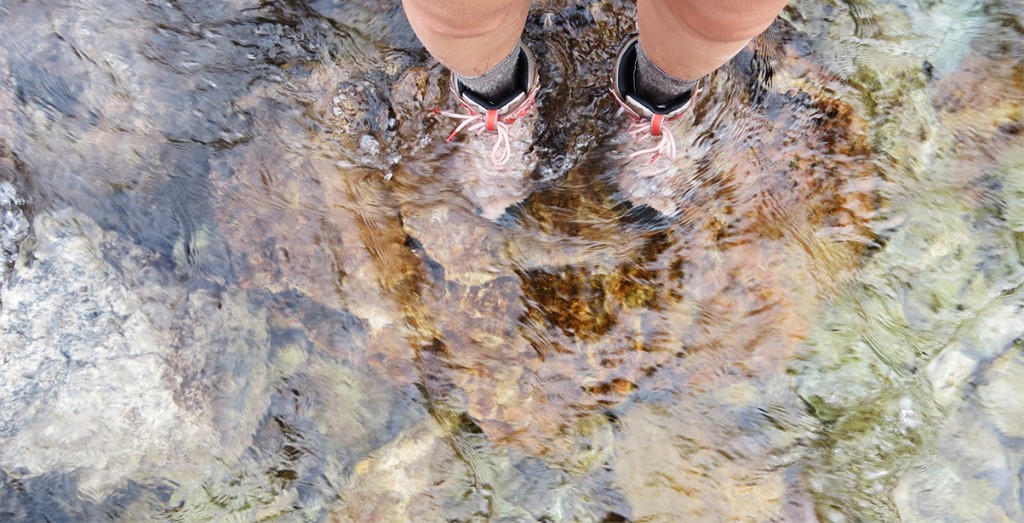 Photo by Nikole Wohlmacher.
Photo by Nikole Wohlmacher.Wear proper socks
Once you’ve chosen your shoes, pack extra wool or synthetic socks, not cotton. These will help your feet breathe and will insulate your feet even when they get wet. We recommend packing more socks than you think you’ll need! You can have one pair on your feet, one pair tied to the side of your backpack drying out and another dry pair stashed in your backpack.
Know the terrain
This will ensure you’re all on the same page when you reach obstacles in the trail. Here are some terrain types and obstacles you may encounter:
- On trail: Walking on a designated trail. Usually these are well maintained, easy to follow and marked on area maps.
- Off trail: Navigating without a trail. This can include following landmarks such as river drainages, valleys, mountain passes etc. This type of travel often includes “bushwhacking,” or walking through dense areas of trees and brush. Usually, this means slower travel and paying more attention to where you place your feet!
- River crossings: Look for any significant rivers on your route before starting the trip. If it looks like your feet might get wet, pack extra socks or your water shoes. It’s not fun to arrive at camp and not have dry footwear to change into.
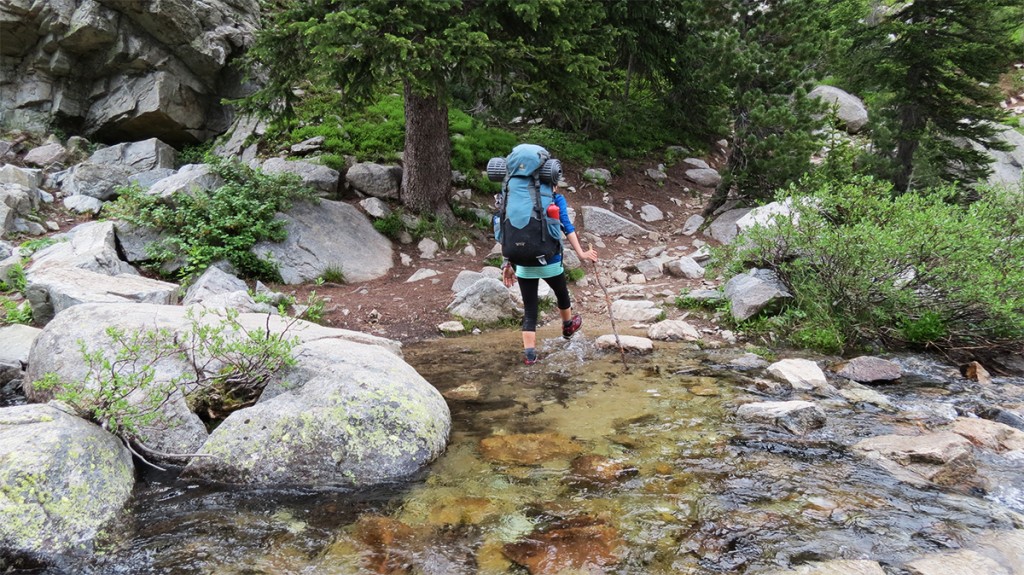 Photo by Nikole Wohlmacher.
Photo by Nikole Wohlmacher.Once you have a plan, goals for the trip, and your shoes, get out there and explore! Your feet will thank you for all of your work and planning.
The NOLS Mythcrushers bust common myths about blister care:
Written By
Kim Freitas
Kim is a Wind River Wilderness and Wilderness First Responder graduate who works as the NOLS Writer and PR Specialist. She enjoys vegetarian cooking, warm yoga, and drinking lots of coffee!



